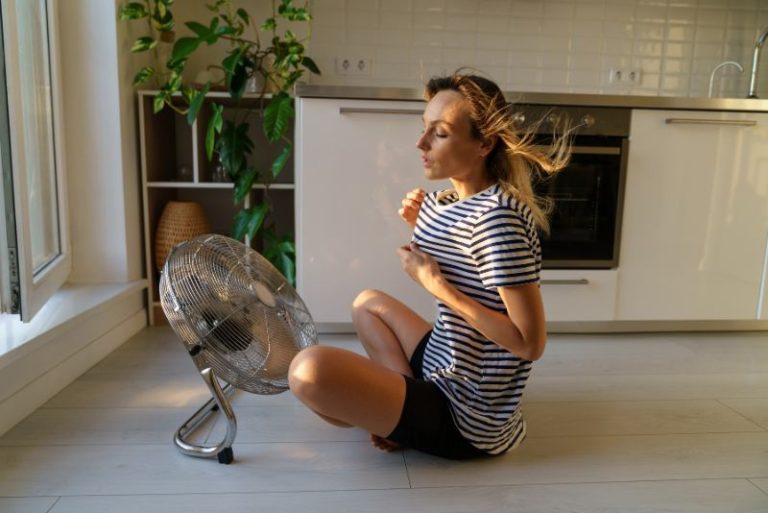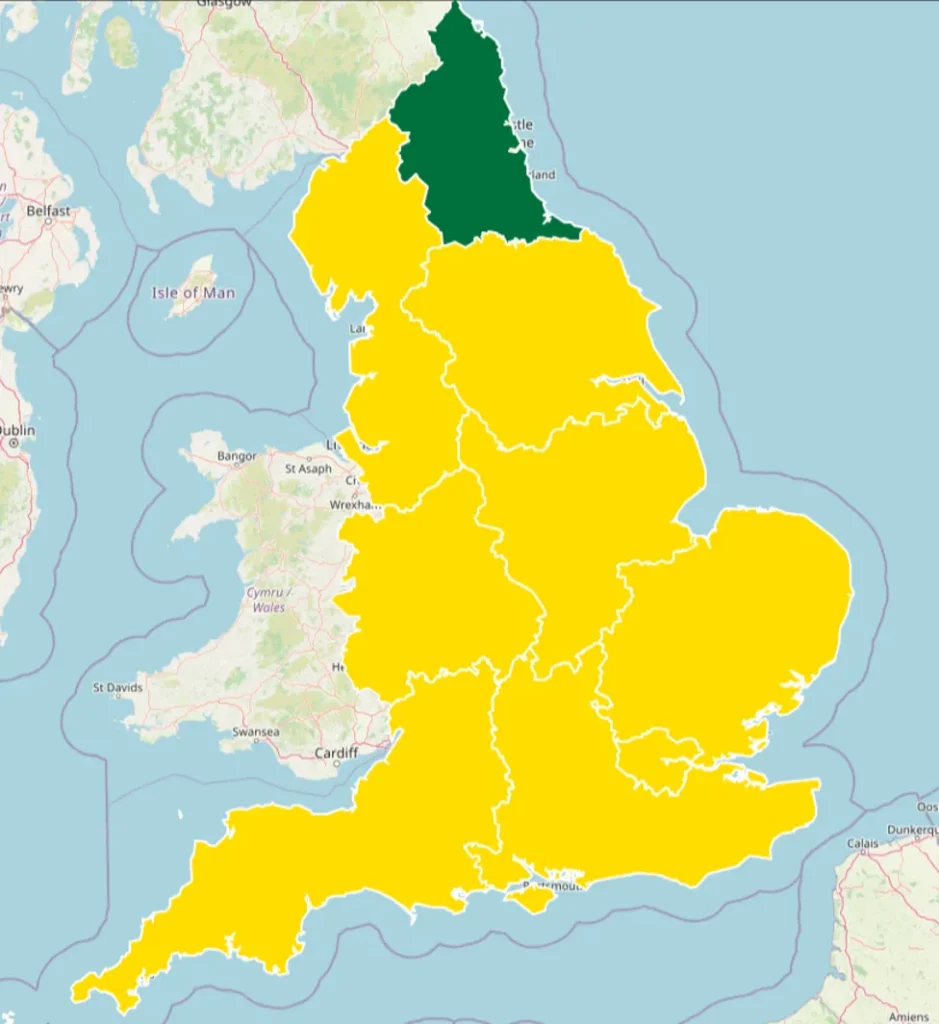Whether you’re a sun-lover or prefer to stay in the shade, it’s set to be a hot one! Many parts of the UK have been issued with a yellow warning for heat. The alerts from the UK Health Security Agency will remain in place in eight regions until 5pm on Thursday 27th June.
After a mild start to summer, you may be looking forward to these next few days, where temperatures are set to reach 30°C in some parts. But sunburn, heatstroke and dehydration can quickly change the mood from fun to glum.
In fact, the NHS struggles to cope with the influx of heat-related injuries in the summer, issuing their ‘summer preparedness’ document last year, following record heat (and, sadly, deaths). So, we’ve prepared a comprehensive guide to keeping you, your family, pets and home safe and cool this summer. Please share this guide with your family and friends.
What is classed as a heatwave?
Not just any period of sunshine and heat is a heatwave – there’s specific criteria from the Met Office. The temperature needs to exceed the threshold of 25-28°C, for three continuous days or more. This can lead to weather warnings:
An Extreme Heat Warning is an impact-based warning designed to highlight the potential impacts of extreme heat to protect lives and property and help people make better decisions to stay safe.
A Public Health England Heat Health Alert is an England-specific services that considers the impact of prolonged extreme heat on public health, especially those with long-term health conditions.
Whether it’s officially a heatwave or not, being out in the sun means you should take extra care to keep safe and well.
While we all want to make the most of the good weather, being exposed to extreme heat and sunlight, especially over long periods of time can come with risks. These include sunburn, dehydration and heatstroke or sunstroke.
Avoiding sunburn
Whether you’re an English Rose, naturally darker-skinned, or like to top up your tan, it’s important to protect your skin. Not only can sunburn be painful and leave you with painful, damaged skin, but sun exposure can increase your chances of skin cancer due to harmful UV rays. You should:
- Wear suncream and reapply at least every two hours and after being in water, even if it’s ‘water resistant’. As a guide, adults should aim to apply around 6 to 8 teaspoons of sunscreen if you’re covering your entire body.
Check the Sun Protection Factor (SPF) which is a measure of the level of ultraviolet B radiation protection. SPFs are rated on a scale of 2 to 50+ based on the level of protection they offer, with 50+ providing the strongest protection. You will also see a star rating on suncream bottles, which refers to the amount of ultraviolet A radiation protection. The higher the star, out of five, the better the rating.
- Spend time in the shade, especially between 11am-3pm, when the sun is at its strongest.
- Wear the right clothing, including sunglasses to protect your eyes, a wide-brimmed hat, and loose, lightweight clothing with a close weave that covers your body and doesn’t allow sunlight through.
- Take extra care with babies and children, to make sure they are properly protected. This includes wearing at least factor 30 suncream, reapplying suncream regularly, staying in the shade, and protecting their head with a hat.
Top tip – don’t forget to apply suncream to ‘hidden’ spots such as the backs of your legs, soles of your feet, and behind your ears, as these can all get burnt and be painful to heal. Apply suncream to your head and back of your neck if you have thinning, or no hair.
Keeping hydrated
When you’re out in the sun, it’s important to keep hydrated and drink plenty of water. As you’re sweating more from the heat, you will lose more water from your body and need to replenish it. If you’re busy gardening or enjoying time outdoors with the family, it can be easy to miss even the most obvious warning signs, such as:
- Feeling thirsty
- Passing water less regularly
- Feeling dizzy or lightheaded
- Feeling tired
- A dry mouth, lips and tongue
- Sunken eyes
In babies and young children, extra signs can include few or no tears when they cry, not having many wet nappies, and being drowsy or irritable.
Adults should drink two litres of water each day, but during a heatwave you can also eat cold food, avoid alcohol, caffeine and hot drinks and put cool water on your skin or clothes.
What is heatstroke?
If you or someone you’re with starts to feel unwell with a high temperature in hot weather, it could be heat exhaustion, or heatstroke. Heat exhaustion does not unusually need emergency medical help if you can cool down within 30 minutes. But, if it turns into heatstroke, it needs to be treated as an emergency.
Signs of heat exhaustion include:
- Tiredness
- Dizziness
- Headache
- Feeling nauseous and/or vomiting
- Excessive sweating, pale and clammy skin or a heat rash
- Cramps in your arms, legs and stomach
- Fast breathing or heartrate
- A high temperature
- Being very thirsty
- Weakness
- For children and babies: being irritable
If someone has heat exhaustion, move them to a cool place and remove all unnecessary clothing. Give them water or a sports rehydration drink. Cool their skin with a spray or sponge with cold water. You can wrap ice packs in cloth and place it under their armpits or on their neck.
They should start to feel better within 30 minutes – if not, ring 111 or 999 and seek medical assistance.
Is it safe to drive in a heatwave?
In hot temperatures, driving can be uncomfortable and possibly dangerous if you haven’t taken the right precautions. It’s best to avoid driving if you can, however, in some cases this isn’t always possible.
If you do have to drive during a heatwave, make sure to keep a bottle of water on-hand, as well as sunglasses and the correct footwear. Try to park in the shade, to keep your car as cool as possible, and utilise your aircon. You should also pay attention to temperature-specific issues with your tyres, engine, and battery. Check out our summer driving blog for even more tips.
How to keep your home cool in summer
And while we need to be more vigilant outside, it’s also important to ensure you remain cool indoors too. As energy bills have soared in recent years, many of us have put extra effort into keeping heat within our homes. But even as we reach summer temperatures, relying on air conditioning or an electric fan can bump up your energy bills too! The cost of keeping cool has shot up by more than 75% over the past two years, with many energy charges more than doubling in the last 12 months.
With this in mind, there are a few tips and tricks to utilise during periods of hot weather to keep your house cool, without breaking the bank.
- Keep windows and blinds closed, to keep the hot air and light outside. Wait until night-time to open them and let a cool breeze through.
- Install or close your blinds during the day, so they can reflect the sun’s powerful rays back, rather than into your house and warming it up. For a DIY solution, on really hot days try popping tin foil in your windows to reflect the rays!
- Fill up a spray bottle with water and spray your curtains to make them damp and cool.
- Invest in a battery-powered fan, which should be cheaper to run than an electric one and once charged, last for hours! For extra cooling power, place a bowl of ice in front of your fan to create a mini air conditioning unit for a fraction of the cost.
- Create a ‘cold water bottle’, by filling up your usual hot water bottle and placing it in the freezer for a few hours. Alternatively, you can use a regular plastic bottle, or fill a clean sock with rice, and freeze for a short time, to create your own cooling pad.
- Freeze your bedsheets or pyjamas in a plastic bag, a couple of hours before going to bed. Then dress your bed/self as usual for bed, and bask in the cooling effect to help you sleep. If you don’t have much freezer space, try it with just your pillowcase instead.
- Get out of the kitchen – forget cooking during a heatwave and stock up on salads and sandwiches to keep you and your home that little bit cooler.
Sources: BBC, UKHSA, NHS, Blue Cross, Pets at Home, RSPCA, Metro, Express, Which?


